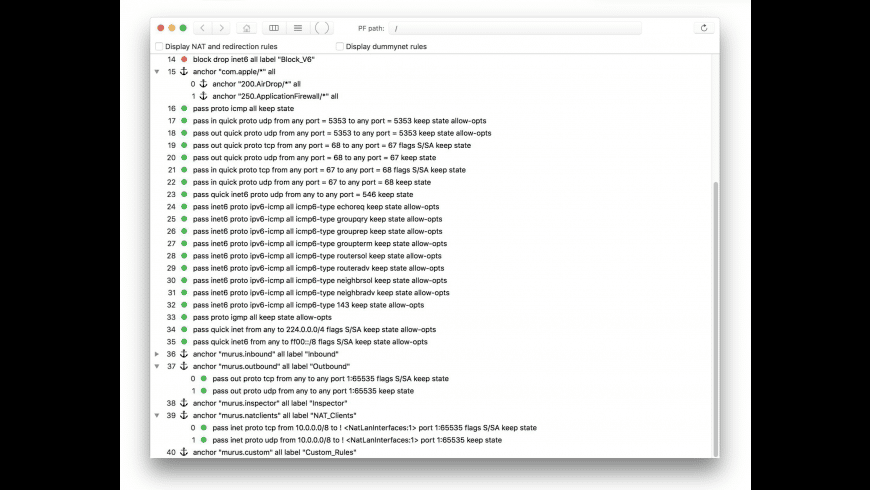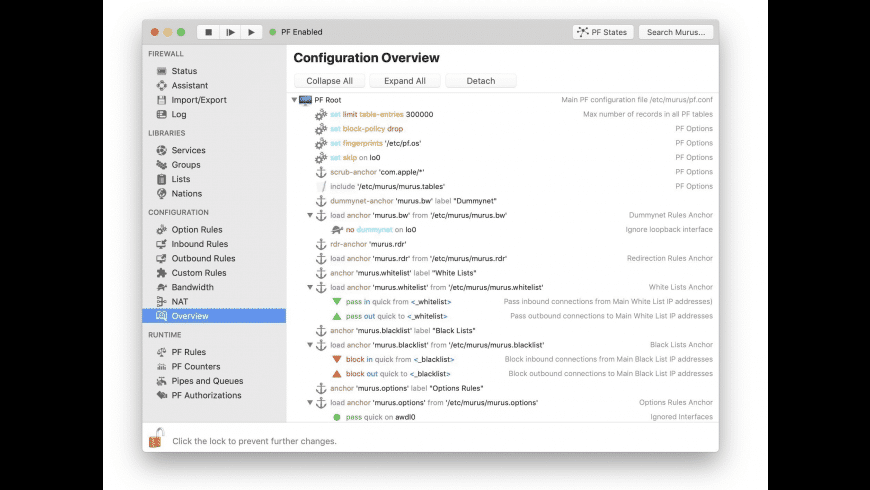

- #Murus basic how to#
- #Murus basic windows 10#
- #Murus basic pro#
- #Murus basic software#
- #Murus basic download#
if it's just you - it might be good to only allow connections from your own IP, or only from your country.

If you just want to log in using SSH or VNC, you will need to open ports. What kind of ports do your applications need to work? For a web server these are TCP ports 80 and 443. Usually it's best to have an inbound policy that by default blocks all traffic, and allows only the traffic that is required. Think about what kind of traffic you want to allow. If your connection is lost, the previous config will be reverted after a while and you can regain access. Murus solves this with a great feature: when you apply new rules, a timer will start to tick and you will need to confirm you still have access. If your rules are too restrictive, or if you make a typo it might be possible that you block your own connections, and physical intervention is required from us. When configuring a firewall, be aware of the risk that you lock yourself out.
#Murus basic software#
The software runs on macOS 10.14.4 or later, but older versions are available as well. In this article we'll use the free version Murus Lite.
#Murus basic download#
You can discover all features on their website, and also download the software:
#Murus basic pro#
They offer a free version that is very powerful already, and if you wish to use the more advanced features there is a Pro version that costs only $35. Murus is a great firewall configuration tool for macOS.
#Murus basic how to#
In this article we show how to do this using a software firewall built-in macOS PF (Packet Filter) using a handy GUI tool called Murus. However, it is a good practice to limit access to your servers with a firewall. No ports are blocked to allow you to run any application you wish. Modified on: Fri, 12 Mar, 2021 at 9:21 AMīy default our servers come with a public IP address that is reachable worldwide. option routers 172.16.106.2).Įdit nf sudo nano /Library/Preferences/VMware\ Fusion/vmnet8/nfĪfter the line “# VMNET DHCP Configuration.Solution home Green Mini host Firewalls and Security Securing your Mac Server with a software firewall 00:0C:29:04:D7:33)Ĭat the file /Library/Preferences/VMware\ Fusion/vmnet8/nf and check the range (that's the dhcp-range e.g.
#Murus basic windows 10#
Open in VMware the configuration of the Windows 10 host and make a note of the MAC address of the network interface (e.g. To get port forwarding working in VMware you have to modify several files, set up port forwarding twice - on the router and in VMware - and add a route to the NAT'ed VMware network on the router. Some basic knowledge of the CLI is required here. NAT-Mode (which in fact is a double-NAT: first your router and then the VMware NAT) I don't have access to Linkysys router so I can't provide screenshot and can only guess how it looks like.

In the To IP Address box you have to enter the IP of the Windows 10 host! Application Name External Port Internal Port Protocol To IP Address Enabledġ338server 1338 1338 both 192.168.0.10 yesġ340server 1340 1340 both 192.168.0.10 yes

This is done in the System Preferences of the VM! All other settings (Netmask/Gateway/DNS) there are identical to the settings of the OS X host. If your main network has the network address 192.168.0.0/24, the router 192.168.0.1 and your OS X host something in the range 192.168.0.2-192.168.0.254 then you have to configure the Windows VM with a static but unique IP (e.g. In Bridge Mode your VM acts as a separate host in your main network. Instead of connecting the Windows 10 VM in NAT-mode use the Bridge Mode and choose - depending on the connection of the OS X host - either the Wi-Fi or Ethernet interface. You have two options here: a very simple one and second one which requires a lot of work because unlike Parallels VMware Fusion doesn't provide a NAT & port forwarding interface.


 0 kommentar(er)
0 kommentar(er)
